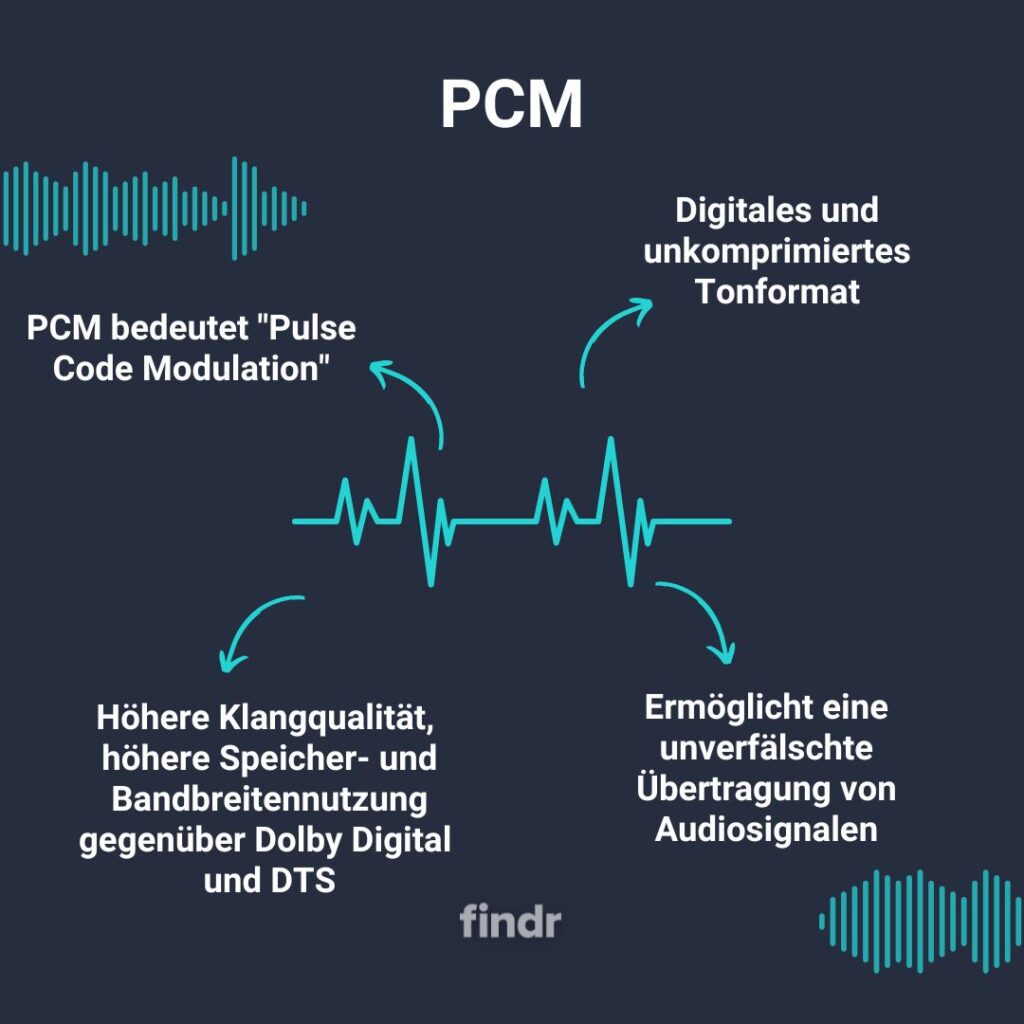PCM (Pulse-Code Modulation)
Pulse Code Modulation is a digital, uncompressed audio format that was developed back in the 1930s by British engineer Alec Reeves. Due to a high sampling rate and bit depth, PCM enables the lossless conversion of analog to digital audio signals and their transmission.
The base of audio formats
Basically, this format is the source of all digital audio files for Blu-ray, DVDs, CDs and home theater. Compared to other encoding procedures such as Dolby Digital and DTS, pulse code modulation offers a better sound result, since the sound quality is not affected during digitization, but on the other hand also requires a higher storage and bandwidth usage.
Dolby Digital and DTS, on the other hand, use what is known as lossy compression with data reduction to encode audio signals and keep the information demand and bandwidth within a lower limit this way.
Due to the comparatively high data rate of 4600 Kbit/s, the format offers the best possible playback quality in terms of surround sound characteristics alongside formats such as TrueHD and DTS HD MA, but not the same flexibility as the solutions by Dolby and DTS.
Apart from that, you need a receiver that decodes the linear variant, also called L-PCM, to achieve a full PCM 5.1 surround sound effect. If this is not the case, the sound will only be played out in 2.0 stereo.
Attention: Due to the comparatively high bit rate, optical transmission via Toslink or S/PIF is only possible with a two-channel stereo sound.
- Audio
- Codecs
- Companies
- Features
- Ports
- Technical Terms
- Connectivity
- Misc
- Smart-Features
- Video
- Image Errors
- Image Formats
- Image Function
- Ports
- Technical Terms
- 4K
- 4K@120 Hertz
- Aspect ratio
- Backlight
- Banding
- Bit
- Black level
- Brightness
- Calibration
- Candela
- Color resolution
- Color space
- Color space coverage
- Color temperature
- Color volume
- Contrast
- Curved
- Filmmaker
- Flat
- Full HD
- Gamma
- Gamut
- HD Ready
- Home theater
- Image format
- Image synchronization
- Input Lag
- ISF
- Luminance
- Motion Handling
- Native resolution
- Netflix Calibrated
- Pixel
- Pixel density
- QFT
- QHD
- Raytracing
- Rec.2020
- Refresh rate
- Resolution
- Response Time
- Smart-TV
- UHD
- UHD-2
- VR
- White balance
- WQHD
- TV Tech


